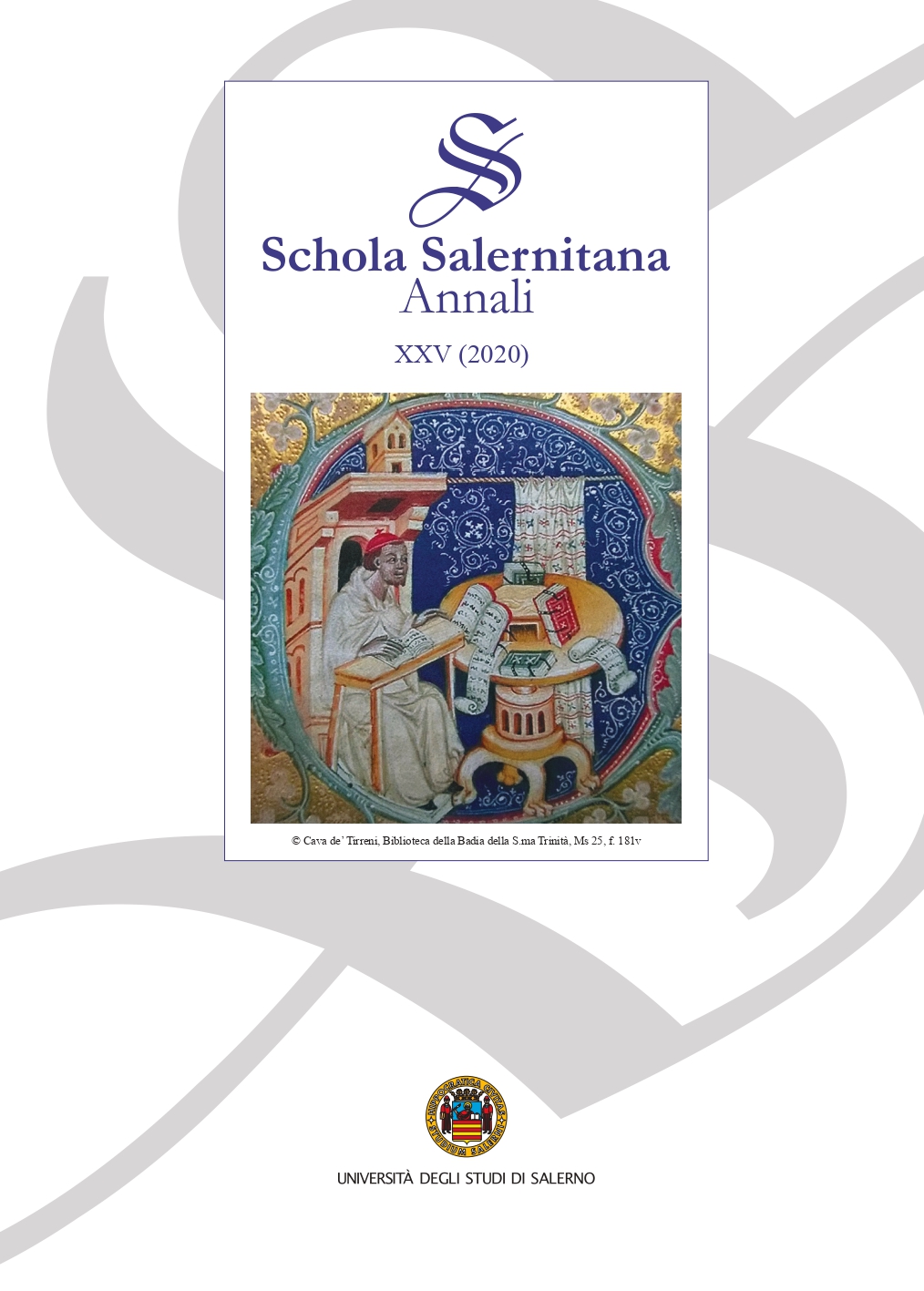Alcune considerazioni sul discorso del primato pontificio
I principi del diritto ereditario e del patrimonium della Chiesa romana (secoli IV-IX)
DOI:
https://doi.org/10.6092/1590-7937/7130Keywords:
Roman Law, Roman Church, Bishop of Rome, Leo The Great, Ecclesiastical Patrimony, Pontifical PrimacyAbstract
At the end of the IVth century, the Church was integrated in the judicial world of Roman Empire. Finally, the sacred Christian rites had a legal foundation, a legal function, based on Roman Law. Over time, despite the controversies and disputes between East and West, the bishop of Rome started using Roman Law to define its office, its possessions, and actions vis-à-vis other ecclesiastical institutions. Between the IVth and the IXth century, two interconnected judicial principles defined Rome: the primacy and the patrimony. Until Leo the Great, the first principle was a theological one based on Matthew 16:18-19; under the bishop Leo, the primacy of Rome began to add a legal perspective to its cause: the hereditary condition under Roman Law. In other words, the Petrine Office was bound by a hereditary testament given by Jesus to Peter. If this heir, the bishop of Rome, was made under the Roman Law, it is possible to know exactly how and why in the Middle Ages, the Pope became the vicar of Christ. Our arguments reside on three hypotheses that might define in what way the roman bishop acquired the heir legal status through: adrogans, haereditas or consortium?
Regarding the patrimony, the ecclesiastical propriety was bound to Emperors constitutions. Each law passed gave the bishops more power within their lands: they became paterfamilias in potestate having the rights to own and use their proprieties. Moreover, the birth of Roman Church patrimony in Middle Ages, or as we know it as ”patrimonium Sancti Petri” was nonetheless a creation by Roman Law at the end of the IVth century.
Downloads
Downloads
Published
How to Cite
Issue
Section
License
Authors who publish works in this journal agree to the following terms:
a. They retain the copyright but grant the journal the right of first publication of the work licensed under a Creative Commons Attribution 4.0 International License that allows others to reproduce, share, distribute, communicate with the public, exhibit, represent, perform the work with an acknowledgement of the work's authorship (quoting clearly the author and title of the journal).
b. They are able to enter into separate, additional contractual arrangements for the non-exclusive distribution of the journal's published version of the work (e.g., post it to an institutional repository or publish it in a book), with an indication of its initial publication in SSA.
c. At the time of the proposed publication, authors are required to declare that the content and organization of their work is original and do not in any way compromise the rights of third parties or the obligations related to the preservation of moral and economic rights of other authors or other beneficiaries, both of the texts, images, pictures, tables, and other parts of the contribution. They also declare to be aware of the penalties of the Penal Code and special laws concerning forgery and use of false documents. Schola Salernitana - Annali is free from any civil, administrative or criminal responsibility, and the author will preserve the journal from any claim or demand by a third party.





